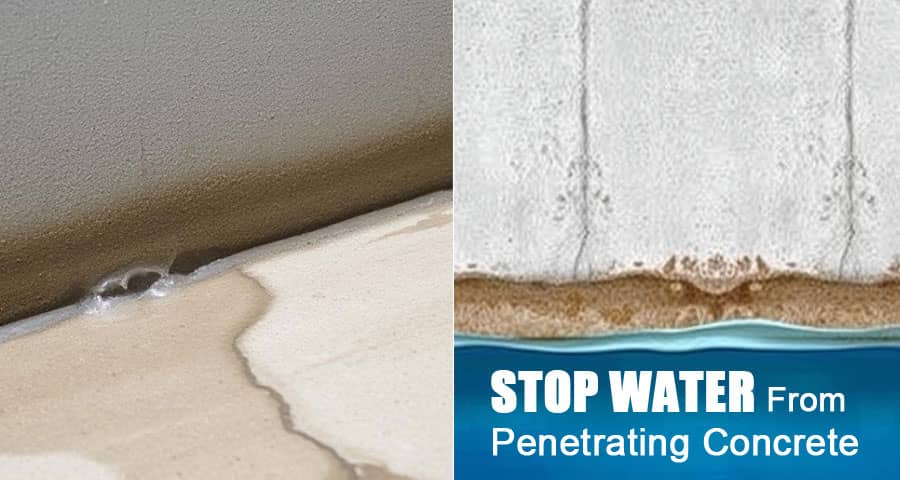How Do You Stop Water From Penetrating Concrete?

Concrete is one of the most commonly used construction materials due to its strength, durability, and versatility. However, it is naturally porous, which makes it susceptible to water penetration. Preventing water ingress is essential to maintain the structural integrity and longevity of concrete surfaces.
Why Is Water Penetration a Problem in Concrete?
Water can compromise concrete structures by causing damage through erosion, corrosion of reinforcement bars, and freeze-thaw cycles. Additionally, water seepage can lead to mold growth, reduced insulation performance, and aesthetic deterioration.
1. Use High-Quality Concrete Mix
A well-designed concrete mix with the right proportion of cement, aggregates, water, and admixtures is the first step to minimizing porosity. Consider the following factors:
- Low Water-Cement Ratio: Maintain a water-cement ratio between 0.40 to 0.50.
- Supplementary Cementitious Materials (SCMs): Incorporate materials like fly ash, silica fume, or ground granulated blast-furnace slag.
- Plasticizers and Superplasticizers: These admixtures improve workability while reducing water content.
2. Apply Waterproofing Coatings
Waterproofing coatings form a protective layer on the concrete surface to prevent water infiltration. Some common types include:
- Acrylic Coatings: Provide UV protection and are suitable for above-ground structures.
- Epoxy Coatings: Ideal for areas exposed to chemicals and heavy traffic.
- Polyurethane Coatings: Excellent for waterproofing roofs and decks.
3. Use Penetrating Sealers
Penetrating sealers are highly effective for waterproofing because they penetrate deep into the concrete pores. They chemically react within the substrate to form a water-repellent barrier. Popular options include:
- Silane and Siloxane Sealers: Best for exterior surfaces exposed to rain and moisture.
- Silicate Sealers: Strengthen the concrete by increasing density and reducing porosity.
4. Install a Waterproofing Membrane
Waterproofing membranes are physical barriers applied to concrete surfaces. These include:
- Sheet Membranes: Composed of rubberized asphalt or polymer-modified bitumen.
- Liquid Applied Membranes: Offer seamless waterproofing and adapt to complex shapes.
- Cementitious Membranes: Suitable for internal applications like basements and water tanks.
5. Incorporate Crystalline Waterproofing
Crystalline waterproofing involves applying a specialized coating that reacts with water and unhydrated cement particles to form insoluble crystals. These crystals block water pathways and seal microcracks. It's ideal for foundations, basements, and below-grade structures.
6. Ensure Proper Drainage and Grading
Prevent water accumulation around concrete structures by implementing effective drainage systems:
- French Drains: Divert water away from foundations.
- Surface Drains: Prevent pooling on flat surfaces.
- Slope Grading: Ensure a minimum slope of 2% away from structures.
7. Repair Cracks and Joints
Cracks and expansion joints are common entry points for water. Regular inspection and maintenance are crucial. Use the following materials for repairs:
- Epoxy Injections: For structural cracks.
- Polyurethane Sealants: For dynamic joints subject to movement.
- Hydraulic Cement: Quick-setting and ideal for active water leaks.
8. Use Integral Waterproofing Admixtures
Integral waterproofing admixtures are added directly to the concrete mix. They reduce permeability by blocking capillaries and enhancing durability. Common types include:
- Hydrophobic Admixtures: Repel water through chemical reactions.
- Pore Blocking Admixtures: Fill voids and capillaries in concrete.
- Crystalline Admixtures: Provide self-healing properties for minor cracks.
9. Apply Protective Coatings to Reinforcement Bars
Corrosion of reinforcement bars accelerates concrete deterioration. Protective coatings like epoxy or zinc-rich primers can significantly extend the life of reinforced concrete.
10. Conduct Regular Maintenance and Inspections
Preventive maintenance is essential for long-term water protection. Perform the following tasks regularly:
- Seal Reapplication: Reapply sealers every 3 to 5 years.
- Crack Monitoring: Seal any visible cracks immediately.
- Drainage Cleaning: Ensure drainage systems remain unclogged.
Conclusion
By applying a combination of these methods, you can effectively stop water from penetrating concrete, ensuring its longevity and durability. From using high-quality concrete mixes and sealers to installing membranes and performing regular maintenance, each strategy enhances concrete's resistance to water damage.
Please watch the following short video for Stop Water From Penetrating Concrete
